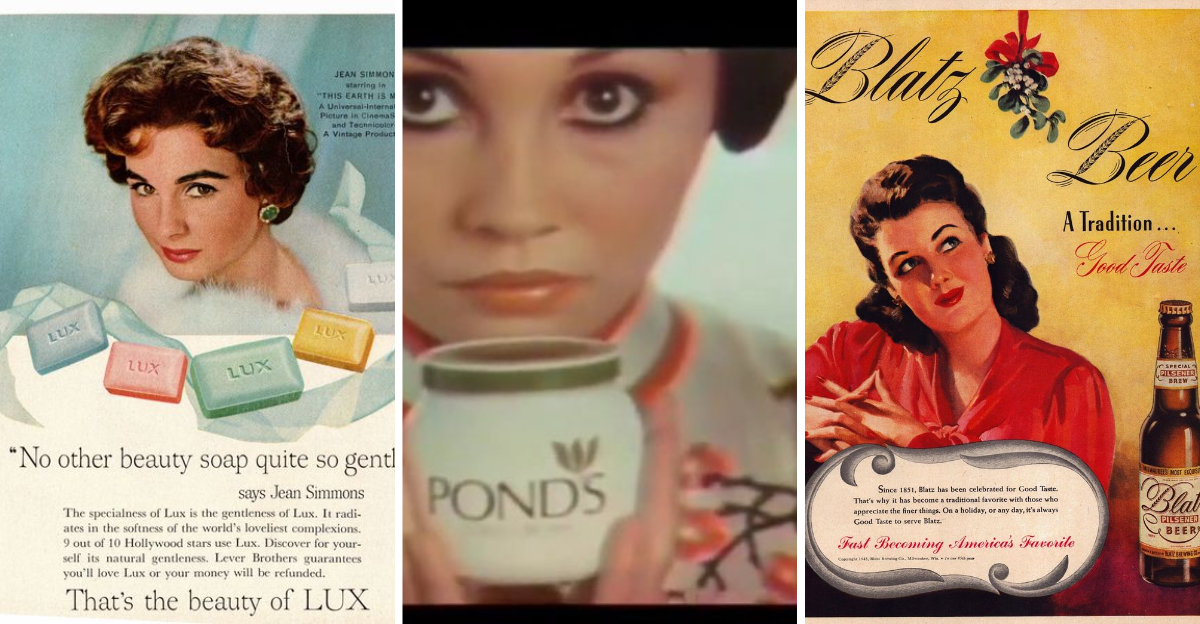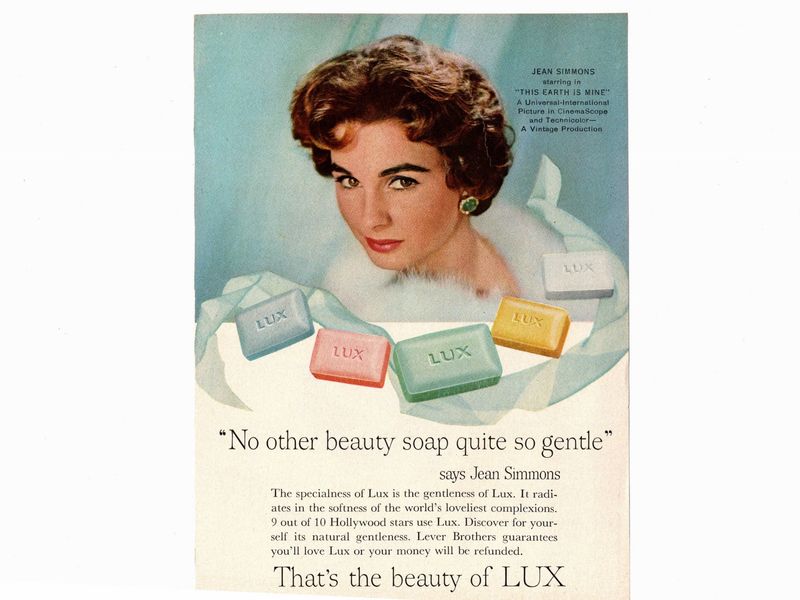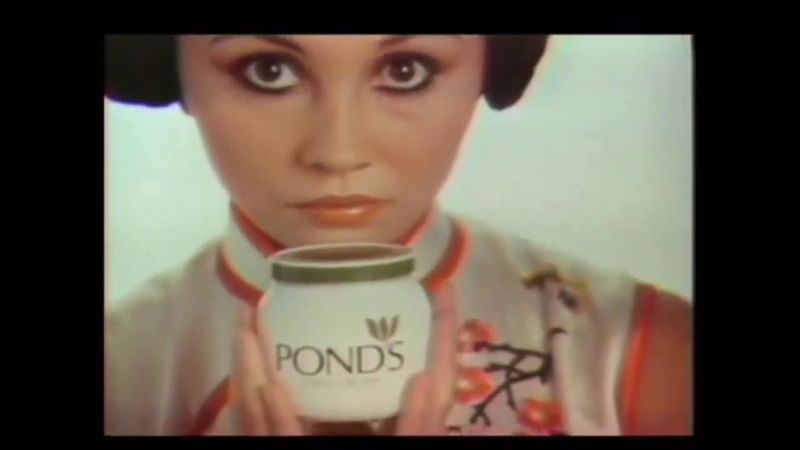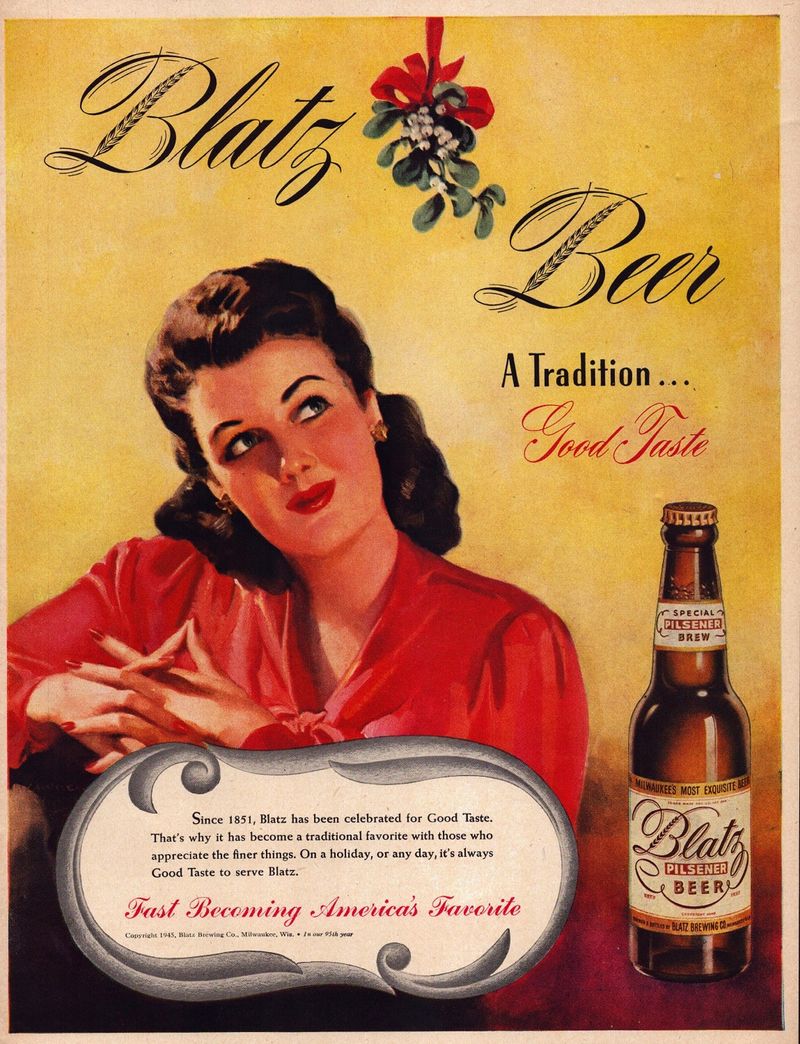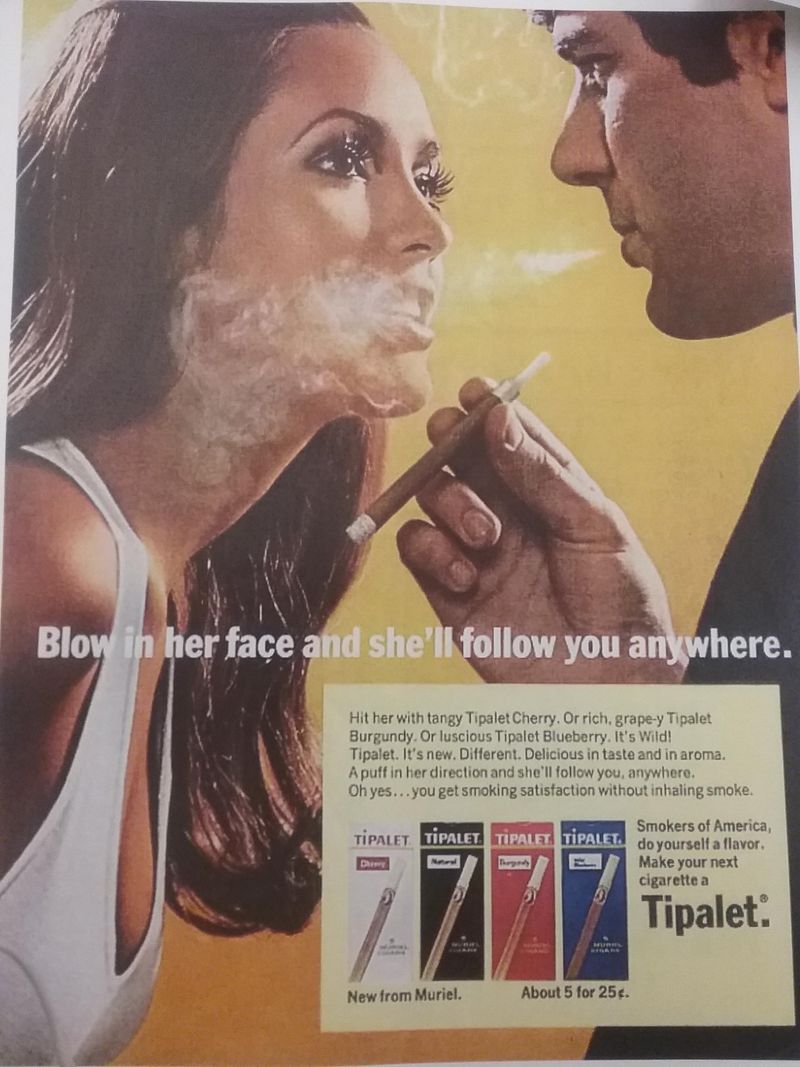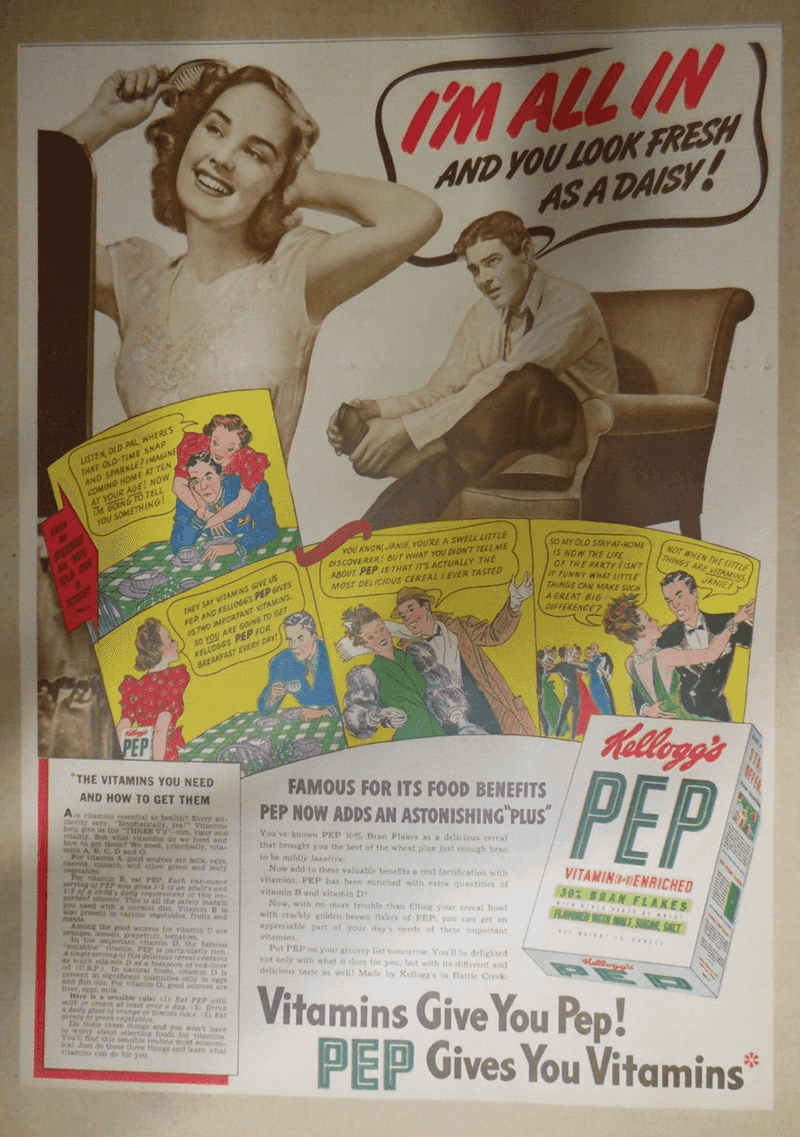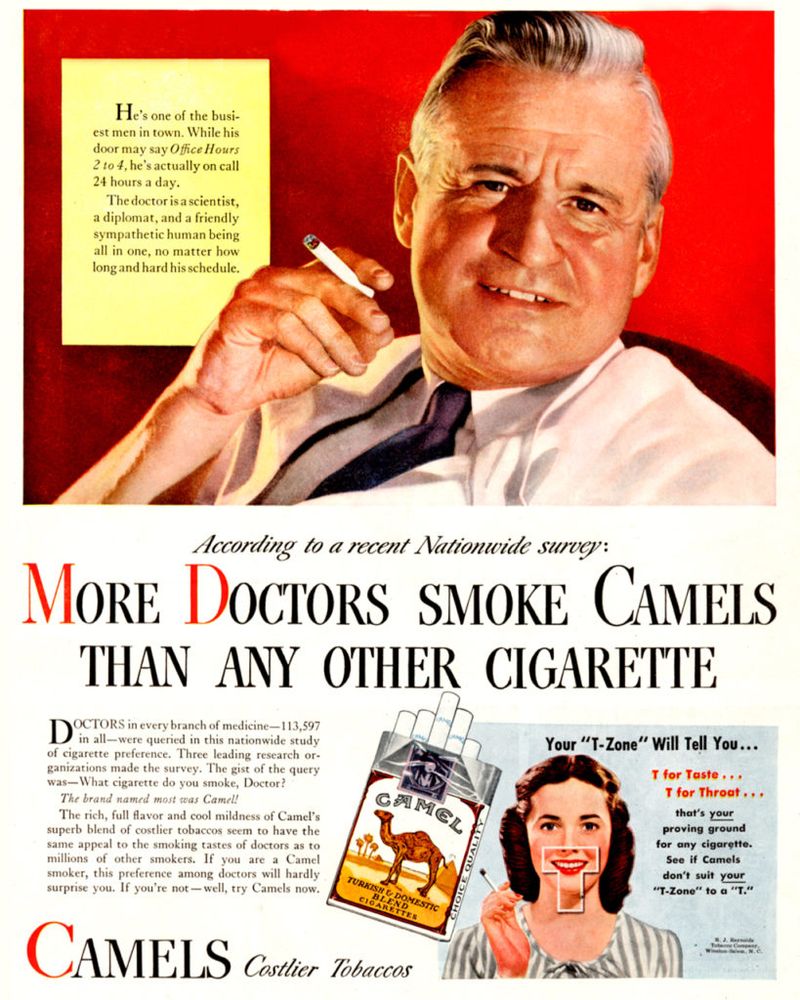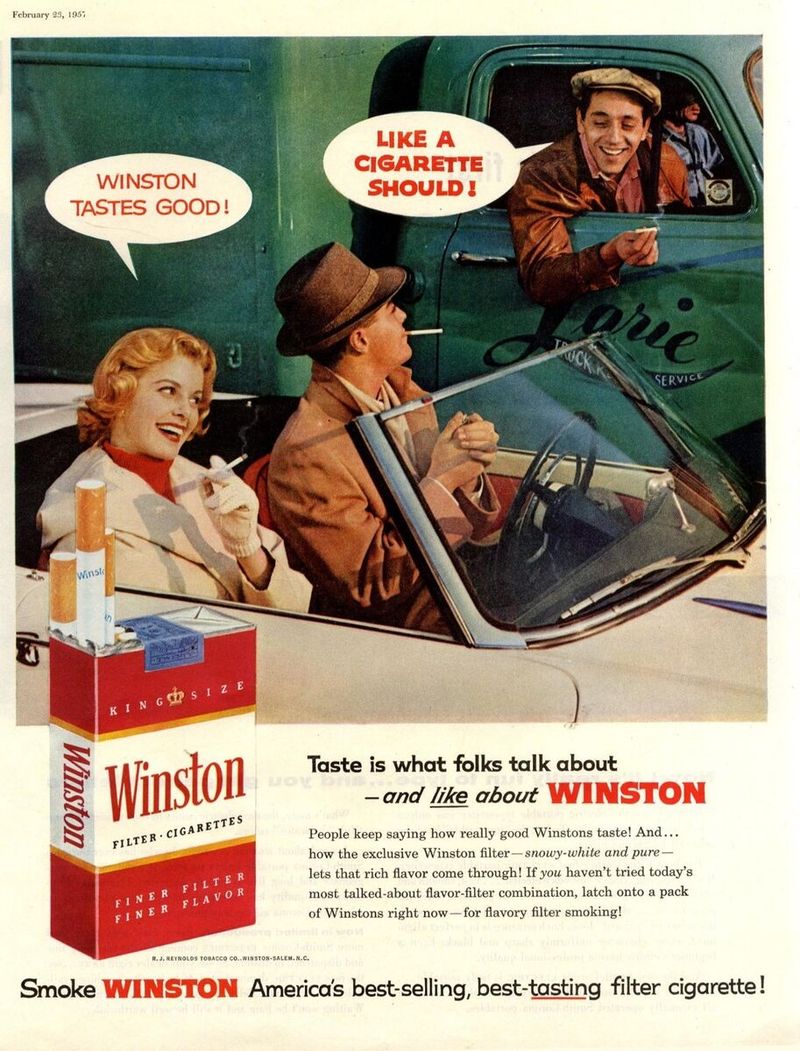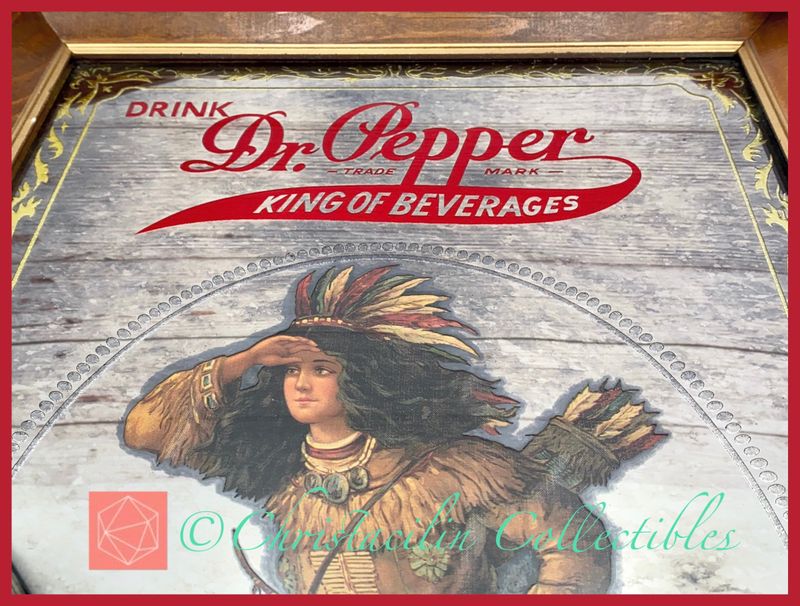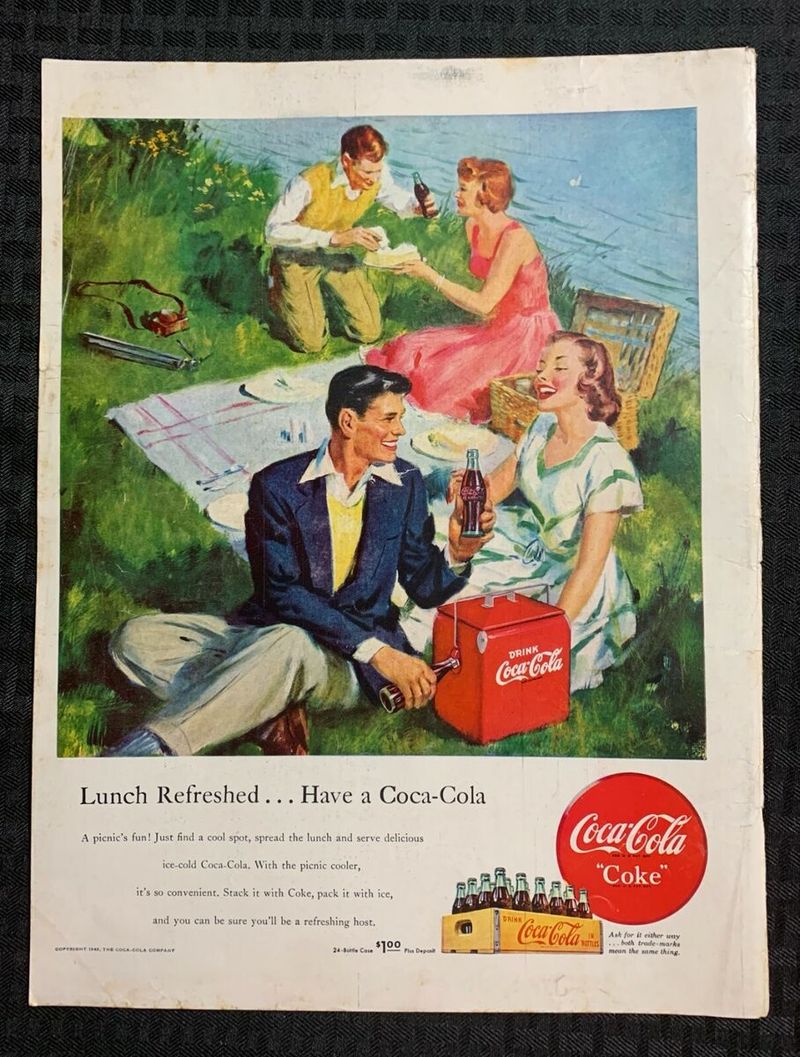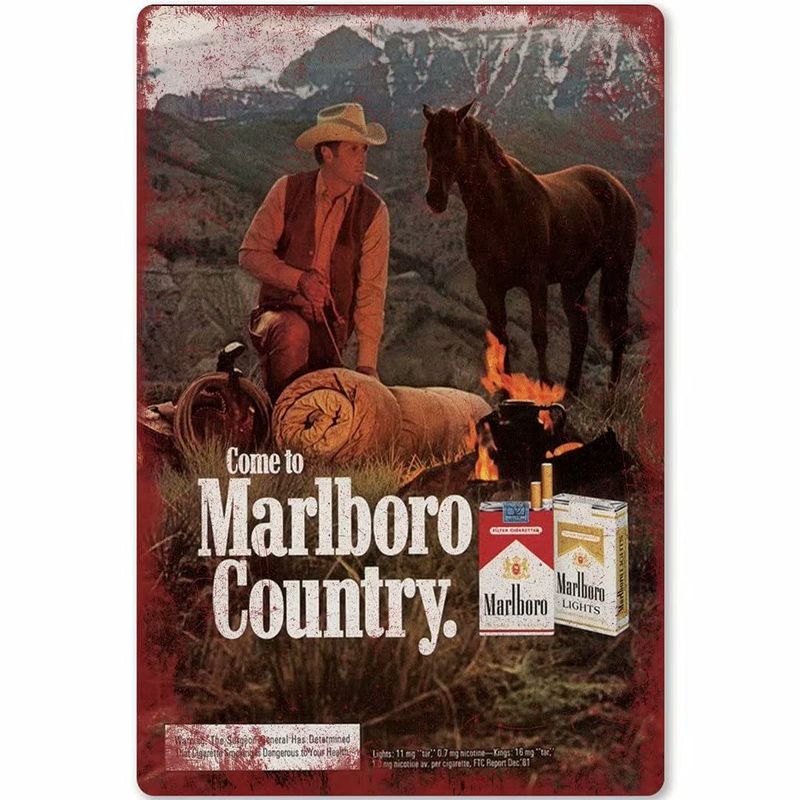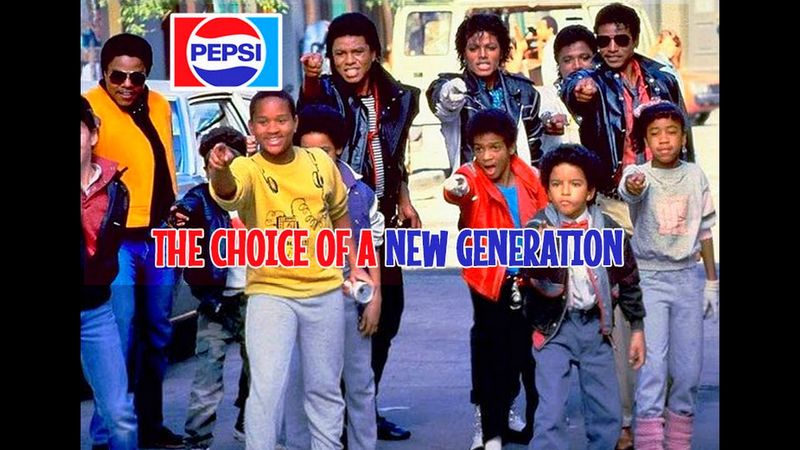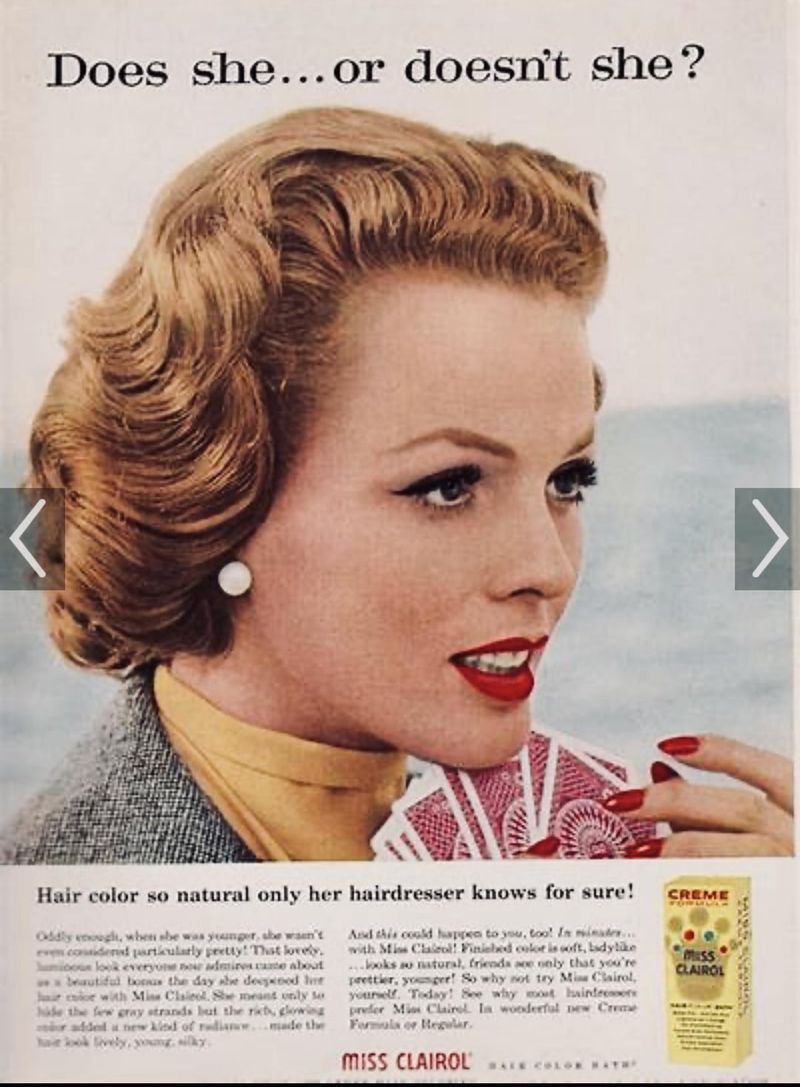Take a lighthearted journey into the past as we explore twelve unintentionally hilarious advertisements. These vintage ads, once taken seriously, now serve as amusing reflections of their time.
From soap endorsed by Hollywood stars to beer suggested as a gift for mothers, these ads reveal cultural nuances and marketing tactics that seem outlandish today. Each item in this list captures the essence of a bygone era with a humorous twist.
Join us as we uncover the quirkiest and most comical ads that history has to offer.
1. Lux Soap and Hollywood’s Secret
In the golden age of Hollywood, Lux Soap was marketed as the secret to glamorous skin. The ads featured stunning actresses, promising that a simple bar of soap could unlock movie star allure.
These claims, though wildly exaggerated, captured the imagination of many. Lux Soap capitalized on the desire to emulate the silver screen’s beauty icons. Users were encouraged to indulge in this luxurious skincare ritual.
It’s a charming reflection of the era’s fascination with celebrity culture and beauty standards. Lux Soap remains a nostalgic reminder of a time when Hollywood’s secrets were just a lather away.
2. Pond’s “Your Best Weapon in Marriage”
Pond’s “Your Best Weapon in Marriage” ads playfully suggested that skincare was pivotal to marital bliss. The campaign featured radiant housewives, asserting that flawless skin would keep husbands enchanted.
Such claims were intended to blend humor with aspiration. The ads reflect the era’s gender dynamics and societal expectations of women. Despite the outdated narrative, the campaign’s creativity is undeniable.
Pond’s cleverly used humor to engage its audience. These ads are now cherished for their comedic take on beauty and marriage. They remind us of a time when skincare was humorously linked to domestic harmony.
3. Blatz Beer for Mom
Blatz Beer’s “For Mom” campaign humorously suggested beer as a suitable gift for mothers. These ads depicted smiling moms enjoying a glass of beer, subtly challenging traditional perceptions of motherhood.
They showcased a relaxed, relatable side to parenting. Though unconventional, the ads aimed to create a casual, family-friendly brand image. Today, they evoke laughter and nostalgia, highlighting shifting societal norms.
Blatz’s approach was both daring and lighthearted, capturing the essence of its era. This ad is a testament to creative marketing that dared to step outside conventional boundaries. It’s a delightful trip down memory lane.
4. Tipalet’s “Blow in Her Face”
Tipalet cigars’ “Blow in Her Face” campaign is remembered for its boldness and humor. The ad encouraged men to entice women with cigar smoke. While bizarre by today’s standards, it epitomized the playful and provocative advertising style of the 1960s.
The ad’s charm lay in its audacity, sparking conversations about dating norms. It presented smoking as a social tool, blending allure with amusement. This approach reflects the free-spirited nature of the era.
Tipalet’s ad symbolizes a time when advertising embraced whimsicality and cheekiness, leaving us with a memorable piece of vintage marketing lore.
5. Kellogg’s Pep Vitamins
Kellogg’s Pep Vitamins were marketed with an astonishing promise: “Pep up your day!” The ads often featured exuberant families, suggesting that cereal could boost vitality.
These lively campaigns captured the post-war optimism, promoting health through playful storytelling. The ads cleverly combined health claims with endearing family dynamics.
Pep Vitamins became synonymous with energy-filled mornings, though the marketing was more entertaining than factual. This campaign is a delightful reminder of an era when breakfast was not just a meal but a vibrant start to the day.
It celebrates creativity in promoting health and happiness.
6. Camel’s Doctor-Recommended Cigarettes
Camel’s audacious “More Doctors Smoke Camels” campaign left an indelible mark in advertising history. Featuring medical professionals promoting cigarettes, these ads aimed to legitimize smoking.
Despite health risks, the campaign boldly navigated skepticism with authority figures. The juxtaposition of health and smoking was absurdly humorous. It exemplified the era’s naive trust in endorsements.
Today, these ads provoke laughter and disbelief, reminding us of past marketing liberties. Camel’s strategy was both risky and ingenious, reflecting the audacity of mid-century advertising.
It remains a fascinating case study in persuasive, albeit misleading, marketing tactics.
7. Winston’s “Plenty of Good Taste”
Winston’s “Plenty of Good Taste” campaign is cherished for its blend of lifestyle and humor. The ads depicted cheerful families enjoying cigarettes amidst leisurely activities.
This juxtaposition of smoking and wholesome family scenes was intended to portray cigarettes as a part of everyday life. Despite the health implications, the campaign’s charm lay in its lighthearted approach.
Winston’s ads are now viewed as quaint artifacts of a different era. They remind us of advertising’s power to normalize habits through relatable imagery and storytelling. This campaign remains a beloved, if ironic, piece of advertising nostalgia.
8. Dr. Pepper’s “King of Beverages”
Dr. Pepper’s “King of Beverages” campaign was a splash of sweetness in the advertising world. These colorful ads portrayed Dr. Pepper as the quintessential refreshment, especially among teens.
The campaign played on youthful exuberance and nostalgia for soda fountains. It cleverly positioned Dr. Pepper as the beverage of choice for those seeking fun and flavor. The whimsical ads reflect the era’s carefree spirit and love for soda culture.
Today, they evoke joy and a sense of retro charm. Dr. Pepper’s campaign was a vibrant celebration of youth, flavor, and the timeless appeal of fizzy drinks.
9. Coca-Cola’s “Coke’s Got a Lot to Give”
Coca-Cola’s “Coke’s Got a Lot to Give” campaign exuded energy and camaraderie. These ads effectively captured summer vibes, presenting Coke as integral to outdoor fun. The imagery was vibrant, often featuring friends sharing the drink.
This campaign emphasized togetherness and enjoyment, resonating with a young audience. Despite its simplicity, it successfully reinforced Coke’s brand identity as a catalyst for joy.
Today, it’s celebrated for its nostalgic depiction of carefree summers. Coca-Cola’s campaign is a timeless reminder of the brand’s ability to create connections and memories through its marketing, making it a staple in advertising history.
10. Marlboro’s “Come to Marlboro Country”
Marlboro’s “Come to Marlboro Country” ads epitomized masculine allure. The iconic cowboy became synonymous with rugged independence and adventure. These ads forged a powerful brand image, linking Marlboro with freedom and the great outdoors.
The campaign’s success lay in its evocative storytelling, transcending the product itself. Despite the health risks, the ads skillfully romanticized smoking.
Today, Marlboro Country is viewed as a cultural phenomenon, showcasing advertising’s ability to shape perceptions. This campaign remains a masterclass in branding, where imagery and narrative combined to create an enduring legend.
It’s a captivating chapter in advertising history.
11. Pepsi’s “Pepsi Generation”
Pepsi’s “Pepsi Generation” ads were a vibrant celebration of youth culture. The campaign connected Pepsi with music, fashion, and youthful exuberance.
It embraced the energetic spirit of the 1980s, resonating with a generation seeking fun and individuality. These ads cleverly aligned Pepsi with cultural trends, fostering brand loyalty.
The “Pepsi Generation” became synonymous with modernity and dynamism. Today, the campaign is remembered for its vibrant depiction of youthful energy and connection.
It remains a standout example of how advertising can capture the pulse of a generation, making Pepsi a cultural icon worldwide.
12. Clairol’s “Does She…or Doesn’t She?”
Clairol’s “Does She…or Doesn’t She?” campaign revolutionized beauty advertising with its intriguing tagline. The ads played on mystery and allure, inviting speculation about hair color.
This clever marketing technique empowered women to embrace hair dye without stigma. By normalizing color treatments, Clairol tapped into a growing desire for self-expression.
The campaign’s success is a testament to its innovative approach and understanding of consumer psychology. It transformed hair dye from taboo to trendy.
Today, it’s celebrated for breaking barriers in beauty advertising, leaving an indelible mark on the industry. Clairol’s campaign remains a milestone in empowering women through choice.
